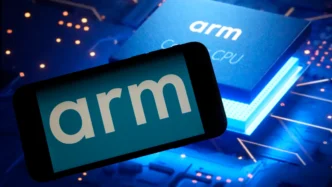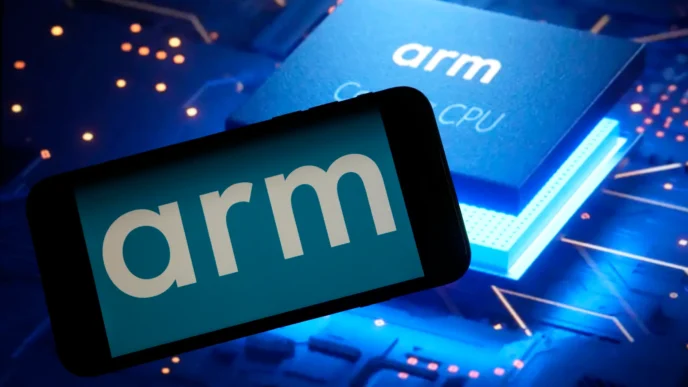For years, Nvidia has dominated the artificial intelligence hardware landscape, powering the explosive growth of large language models, data centers, and next-generation cloud computing. But Alphabet — the parent company of Google — is now positioning itself as a formidable challenger.
Armed with its next-generation AI accelerator chips, the rapidly evolving Gemini model family, and deep integration across Google Cloud, Alphabet is increasingly signaling that it aims not just to participate in the AI revolution — but to lead it.
The competition between Alphabet and Nvidia is no longer theoretical. With the latest hardware and AI infrastructure advancements, Google is entering Nvidia’s territory with a scale, ambition, and technological strategy capable of reshaping the global AI market.
Alphabet’s New AI Chips: Built for a Post-GPU Future
Alphabet has spent years refining its custom-built AI hardware, and its newest generation of chips — the TPU v5 family — marks the company’s most aggressive push into high-performance AI computing yet.
1. TPU v5: Designed for Massive-Scale AI
The fifth-generation Tensor Processing Units feature:
- Significant speed improvements for both training and inference
- Higher memory bandwidth
- Greater energy efficiency
- Distributed computing capabilities optimized for ultra-large models
Google claims that its TPUs can train frontier-scale models faster and cheaper than traditional GPUs — a direct challenge to Nvidia’s dominance.
2. AI-Focused Architecture
Unlike GPUs, which are multipurpose chips, TPUs are designed specifically for:
- Large-scale matrix multiplication
- Transformer model acceleration
- High-volume parallel computations
This specialization allows Alphabet to optimize performance across its entire AI ecosystem.
3. Integration With Google Cloud
Alphabet’s hardware is deeply integrated with:
- Vertex AI
- Google Cloud infrastructure
- Gemini model services
- Data pipelines and developer tools
This gives Alphabet something Nvidia doesn’t have: complete vertical integration from chip to model to cloud deployment.
The Gemini Model: Alphabet’s AI Crown Jewel
Alphabet’s strategic advantage doesn’t stop at hardware. Its flagship AI system, Gemini, is positioned as one of the most advanced multimodal models in the world.
1. Full Multimodality
Gemini processes:
- Text
- Images
- Video
- Code
- Audio
- Data structures
This makes it one of the most flexible foundation models available, creating new possibilities in enterprise and consumer applications.
2. Competitive Performance With GPT and Frontier-Scale Models
Gemini Ultra — the highest tier model — is designed to compete directly with OpenAI’s GPT series and other frontier AI models.
Key strengths include:
- High reasoning performance
- Native multimodal workflows
- Enterprise-scale integrations
Its tight integration with Google Cloud gives Alphabet a major commercial advantage.
3. Built for Deployment at Scale
Gemini is natively optimized to run on:
- Google’s TPU clusters
- Edge devices
- Mobile hardware
- Cloud inference endpoints
This ecosystem-level efficiency is something even Nvidia cannot replicate on its own.
Alphabet vs. Nvidia: A Strategic Battle for AI Infrastructure
Nvidia remains the industry standard for AI chips — but Alphabet’s strategy is fundamentally different:
1. Vertical Integration vs. Industry Supply
- Nvidia sells chips to cloud providers.
- Alphabet builds its own chips and uses them internally and deploys its own foundation models.
This gives Google an end-to-end AI pipeline.
2. Internal and External Scale
While Nvidia powers external AI innovation, Google leverages:
- Search
- YouTube
- Android
- Cloud
- Workspace
- Google Ads
This gives Alphabet the world’s largest real-time data ecosystem for AI development.
3. Cost Efficiency
Google argues that TPUs provide:
- Lower training cost
- Higher throughput
- Better thermal efficiency
- Faster deployment cycles
If widely adopted by Google Cloud clients, TPUs could erode Nvidia’s market hold.
Why Alphabet Is Suddenly a Real Threat to Nvidia
Several factors are shifting momentum:
1. Soaring AI Compute Demand
As companies rush to deploy LLMs and agents, demand for compute is outpacing supply.
Alphabet’s massive internal TPU clusters help close the gap.
2. Enterprises Want AI Alternatives
Relying exclusively on Nvidia GPUs and CUDA poses:
- Pricing risks
- Supply-chain bottlenecks
- Single-vendor dependency concerns
Google offers a compelling alternative.
3. Google Cloud Is Growing Faster With AI Workloads
Alphabet’s cloud division is finally gaining traction, in large part due to:
- Gemini integration
- Custom TPU acceleration
- Generative AI APIs
This gives Alphabet a pathway to enormous enterprise revenue.
4. AI Chips Are the New Economic Battleground
Governments and tech companies want:
- Energy-efficient chips
- Lower-cost training
- Greater control over AI infrastructure
Alphabet’s hardware ecosystem fits neatly into these global priorities.
Nvidia Still Leads — But the Landscape Is Shifting
Despite Alphabet’s momentum, Nvidia remains:
- The dominant AI chip supplier
- The software ecosystem owner (CUDA, TensorRT, cuDNN)
- The gold standard for GPU performance
- The backbone of global AI research infrastructure
But Google’s rising influence represents the first credible, large-scale competitive challenge Nvidia has faced in the AI chip era.
The Coming Years: A Two-Titan Race for AI Dominance
Over the next 24 months, the AI infrastructure race will accelerate. Expect:
- More TPU generations
- Deeper Gemini integration into consumer Google products
- Rapid Google Cloud expansion
- Intensified Nvidia innovation cycles
- Growing demand for non-GPU accelerators
- Governments seeking sovereign AI compute solutions
Alphabet and Nvidia will be the two central forces shaping the AI hardware and model landscape.
Conclusion: Alphabet’s AI Arsenal Positions It for a New Era of Competition
With its advanced AI chips, growing dominance in multimodal foundation models, and unmatched global infrastructure footprint, Alphabet is now positioned to challenge Nvidia in ways few analysts anticipated even a few years ago.
This is no longer just a battle for chip performance.
It is a fight for the future of:
- Global AI infrastructure
- Enterprise AI adoption
- Cloud market leadership
- AI model innovation
- The next trillion-dollar tech frontier
Alphabet’s combination of TPU power, Gemini intelligence, and cloud integration could redefine the competitive landscape — making Google the strongest rival Nvidia has ever faced in the age of artificial intelligence.















